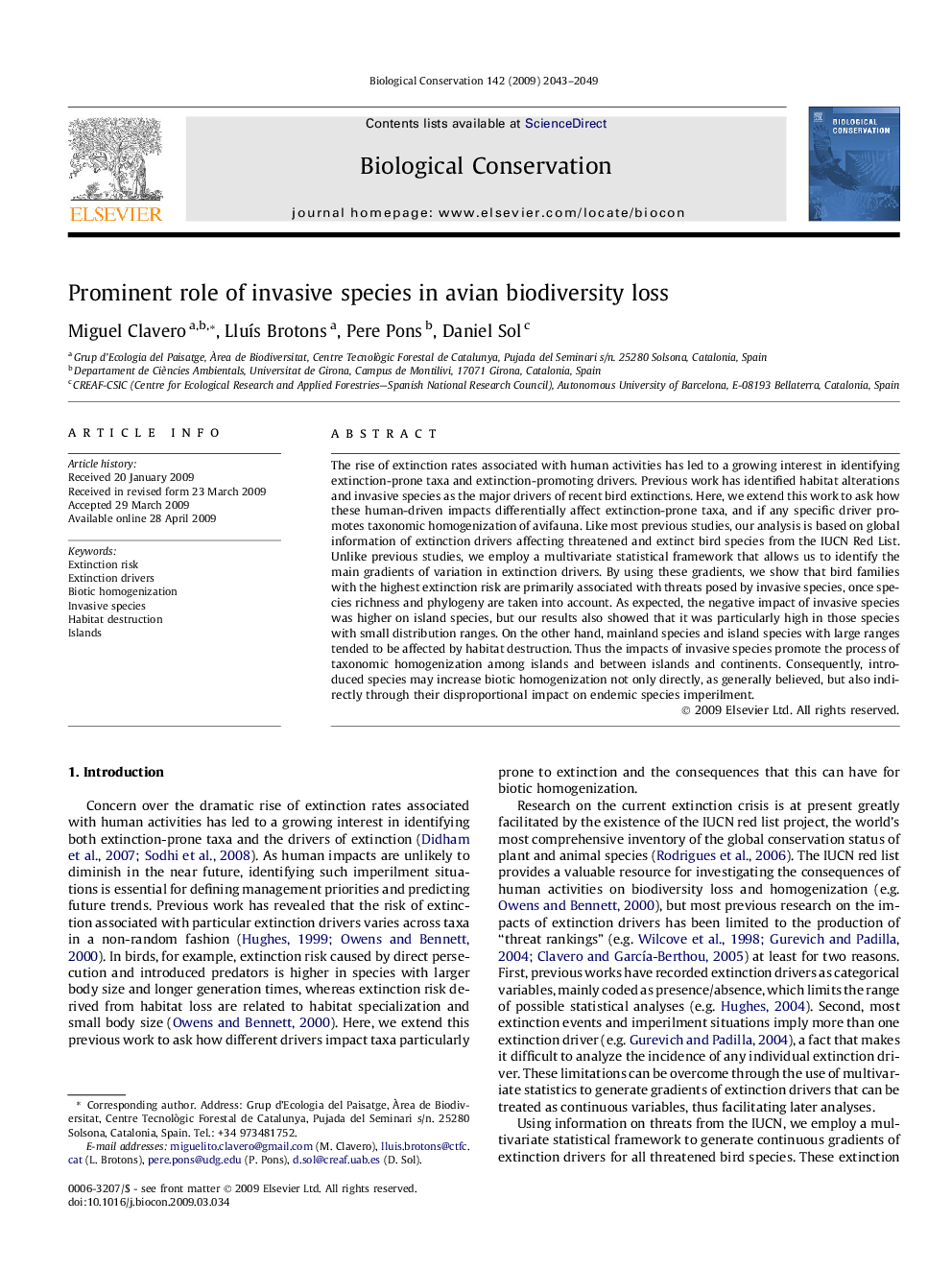| Article ID | Journal | Published Year | Pages | File Type |
|---|---|---|---|---|
| 4386198 | Biological Conservation | 2009 | 7 Pages |
The rise of extinction rates associated with human activities has led to a growing interest in identifying extinction-prone taxa and extinction-promoting drivers. Previous work has identified habitat alterations and invasive species as the major drivers of recent bird extinctions. Here, we extend this work to ask how these human-driven impacts differentially affect extinction-prone taxa, and if any specific driver promotes taxonomic homogenization of avifauna. Like most previous studies, our analysis is based on global information of extinction drivers affecting threatened and extinct bird species from the IUCN Red List. Unlike previous studies, we employ a multivariate statistical framework that allows us to identify the main gradients of variation in extinction drivers. By using these gradients, we show that bird families with the highest extinction risk are primarily associated with threats posed by invasive species, once species richness and phylogeny are taken into account. As expected, the negative impact of invasive species was higher on island species, but our results also showed that it was particularly high in those species with small distribution ranges. On the other hand, mainland species and island species with large ranges tended to be affected by habitat destruction. Thus the impacts of invasive species promote the process of taxonomic homogenization among islands and between islands and continents. Consequently, introduced species may increase biotic homogenization not only directly, as generally believed, but also indirectly through their disproportional impact on endemic species imperilment.
